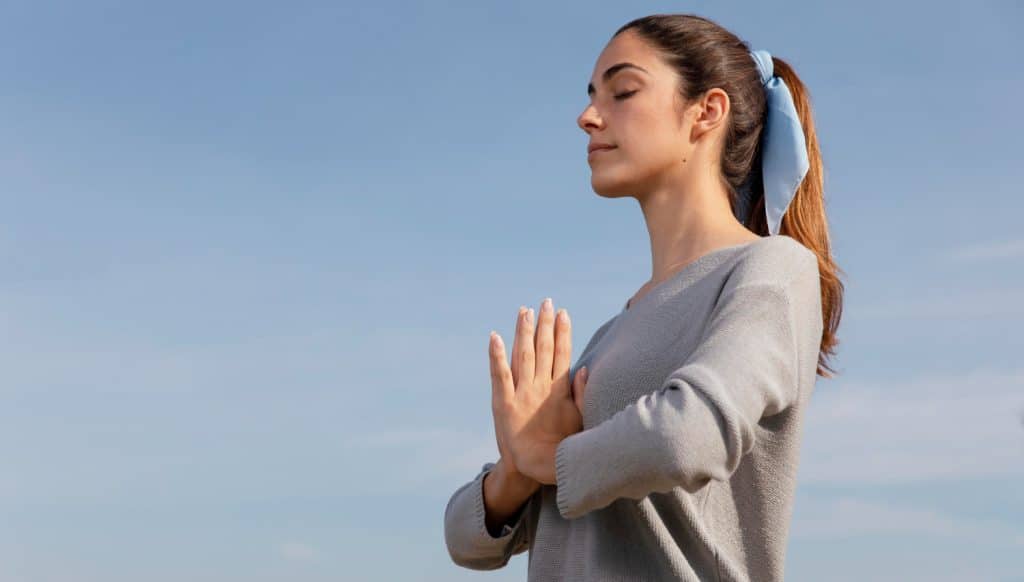Mindfulness 101: Everything You Need to Know to Begin Your Practice

Introduction to Mindfulness
What Is Mindfulness?
Mindfulness is the practice of paying focused attention to the present moment. It means noticing your thoughts, bodily sensations, and environment with an open and non-judgmental attitude. This concept has roots in ancient Buddhist traditions, where mindfulness was seen as a path to insight and peace. Today, mindfulness is widely taught in secular settings as a way to improve overall wellbeing.
Benefits for Mind and Body
Regular mindfulness practice brings both mental and physical benefits. Mentally, it helps people become calmer, more focused, and less reactive to stress. It can support emotional regulation, making it easier to manage anxiety and negative emotions. Physically, mindfulness has been linked to lower blood pressure, better sleep, and reduced chronic pain. These benefits are backed by research and have made mindfulness popular in healthcare, education, and workplaces.
Clearing Up Common Misconceptions
Some people believe mindfulness requires clearing the mind completely, but this is not the goal. Mindfulness is about noticing whatever is happening, even if the mind is busy. Others think mindfulness is only for spiritual or religious people, but anyone can practice it and benefit. Mindfulness is a skill built through regular practice, in just a few moments each day.
Understanding these basics lays the groundwork for exploring how mindfulness shapes the mind and body.
The Science Behind Mindfulness
How Mindfulness Impacts the Brain
Mindfulness practice leads to noticeable changes in the brain. Regular sessions can strengthen areas tied to focus, memory, and emotional control. Studies show the prefrontal cortex, responsible for decision-making and self-regulation, becomes more active with mindfulness. At the same time, the amygdala, which plays a role in stress responses, may shrink, making it easier to manage strong emotions.
Physiological Benefits of Practice
Engaging in mindfulness isn’t just beneficial for the mind. Physically, mindfulness can help regulate heart rate and lower blood pressure. It supports the immune system by reducing the production of stress hormones. People who practice regularly often report improved sleep and increased energy during the day. Even a few minutes daily can encourage the body to relax and recover from daily stress.
Mindfulness for Stress, Anxiety, and Depression
Mindfulness skills can be helpful tools for handling stress, anxiety, and depression. Bringing awareness to the present moment teaches people to observe their feelings without judgment. This approach makes it possible to respond calmly, rather than react impulsively, to life’s pressures. Over time, many find their emotional resilience growing stronger, allowing for a more balanced and peaceful outlook.
By understanding these scientific foundations, the value of mindfulness becomes clear and accessible.
Mindfulness vs. Meditation: Understanding the Difference

Clarifying the Relationship
Mindfulness and meditation often get used interchangeably, but they are not the same. Mindfulness is a quality of awareness—staying present and attentive to each moment, whether you’re eating, listening, or simply breathing. Meditation refers to a set of formal practices designed to cultivate this quality of mindfulness. In other words, meditation is one way to train your mind to be more mindful, but mindfulness can be practiced at any time, with or without meditation.
Formal and Informal Practice
Formal mindfulness involves setting aside dedicated time, like sitting for breath awareness meditation or doing a body scan. Informal mindfulness is about weaving present-moment awareness into ordinary activities: washing dishes, walking, or having a conversation. Both approaches are valuable. Formal sessions offer structure, while informal practices fit seamlessly into daily life.
Why the Distinction Matters
Understanding the difference helps beginners set realistic expectations. Not everyone has time for long meditations, but anyone can practice mindfulness informally. This flexibility makes building the habit less daunting. By starting small and recognizing that opportunities for mindfulness exist throughout the day, you can make the practice achievable and sustainable.
With this foundation, you can begin designing a practice that suits your needs and lifestyle.
Getting Started: Creating Your Mindfulness Practice
Essential Elements for Beginning
Starting a mindfulness practice is about creating simple, sustainable habits. You do not need special tools or prior experience. All you need is a willingness to pay attention to the present moment. Aim for a few minutes each day. Try to approach practice with an open mind and without judgment. This non-critical awareness is the core of mindfulness.
Setting Realistic Expectations and Goals
Many beginners expect quick results. Mindfulness is most helpful when approached with patience. Set small goals, such as practicing for five minutes each day. Progress is often subtle. The main goal is noticing moments of awareness—these small successes build over time. If you miss a day, simply start again without self-criticism.
Creating a Comfortable Space
Choose a spot where you can sit quietly, free from distractions. It can be a chair, cushion, or any spot that feels safe and calm. Soft lighting, comfortable clothing, and even a small ritual, like lighting a candle, can make practice inviting. The space should signal a gentle break from daily busyness.
Small steps help mindfulness become a valued part of daily routine.
Basic Mindfulness Meditation Techniques
Breath Awareness for Beginners
Breath awareness is a simple starting point for practicing mindfulness. Begin by finding a quiet, comfortable space where you can sit upright, but relaxed. Gently close your eyes or lower your gaze. Bring your attention to your natural breath. Notice the sensation of air moving in and out, the rise and fall of your chest, or the feeling at the tip of your nose. If your mind wanders, gently return your focus to the breath without judgment.
Posture, Timing, and Focus
A comfortable but upright posture helps you stay alert. You can sit on a chair with feet flat on the floor, or on a cushion if you prefer. Rest your hands in your lap. Start with short sessions, around 5 minutes, and gradually extend over time. Consistency is more important than duration in the beginning. Focusing on the breath anchors you in the present, helping to prevent distractions from overwhelming you.
Overcoming Common Challenges
It’s normal for thoughts to wander or for restlessness to arise. When this happens, acknowledge the distraction, and gently bring your focus back to the breath. Avoid being critical or impatient with yourself; mindfulness develops through regular, compassionate practice. With patience, these challenges become easier to manage, supporting steady growth and self-awareness.
Body Scan Meditation: A Beginner-Friendly Approach
Step-by-Step Guide
| Step | Instruction |
|---|---|
| 1 | Sit or lie comfortably. |
| 2 | Take a few deep breaths. |
| 3 | Move attention slowly from toes to head, observing sensations without judgment. |
| 4 | End by noticing your body as a whole. |
The body scan meditation invites gentle awareness to your physical self. Begin by choosing a quiet, comfortable space. Lie down or sit with your back straight and shoulders relaxed. Close your eyes, and take several deep breaths to settle in.
Direct your attention to your toes. Notice any sensations—tingling, warmth, or tension—and simply observe without judgment. If your mind drifts, gently return focus to your toes. Gradually shift attention up through your feet, legs, hips, abdomen, chest, hands, arms, shoulders, neck, and finally your head. Linger briefly on each area before moving on. End with a few deep breaths, noticing how your body feels as a whole.
Reducing Stress and Increasing Body Awareness
Practicing this technique helps you catch tension before it builds into discomfort. By tuning into each part, you may notice areas of tightness or relaxation. This awareness teaches you to release stress physically and emotionally, fostering a calm, grounded state.
Fitting Body Scan into Routine
You can practice a body scan as part of your morning, before sleep, or during a midday break. Consistency, even in brief sessions, helps nurture mindfulness and ease tension, making it a valuable part of self-care.
Mindful attention to your body can gently deepen your awareness, laying foundations for further mindfulness practice.
Walking Meditation: Mindfulness in Motion

Practicing Mindful Walking
Walking meditation provides an option for those who find sitting meditation challenging. To get started, select a quiet, safe space where you can walk without obstacles. Stand still and take a moment to notice your body and breath. Begin to walk slowly, paying attention to the sensations in your feet as they touch and leave the ground. Focus on each step—notice the movement of your legs, the shifting of your weight, and the feeling of air on your skin. Keep your gaze soft and your arms relaxed at your sides. If your mind wanders, gently guide your attention back to your footsteps.
Benefits for Mindful Movement
Mindful walking can be especially helpful for those who find stillness difficult. Walking meditation allows you to be present while in motion, combining gentle exercise with awareness. This practice helps calm the mind, reduces tension, and improves focus. Over time, it may increase your appreciation for everyday movement and bring clarity during stressful periods.
Connecting to the Present Moment
As you walk, let yourself tune in to the sights, sounds, and smells around you. Notice the rhythm of your breathing and the connection between your body and the ground. This practice can help you ground yourself when your thoughts feel scattered, offering a peaceful way to reconnect with the present.
Making mindful walking part of your day can deepen your awareness and support a balanced approach to mindfulness.
Integrating Mindfulness into Daily Life
Bringing mindfulness into your everyday activities helps deepen your practice. Instead of reserving mindfulness for quiet moments or meditation, you can use simple techniques throughout your busy day.
Everyday Mindfulness Practices
Start by choosing one daily activity—like brushing your teeth, washing dishes, or commuting—to approach with focused attention. Notice the details: the taste of toothpaste, the feeling of water on your hands, or sights and sounds on your way to work. If your mind wanders, gently bring it back to the present moment.
Mindful Eating, Listening, and Communicating
Eating mindfully means truly noticing the appearance, smell, and texture of your food. Take small bites, chew slowly, and observe how you feel as you eat. When listening to someone, set aside distractions and give your full attention, observing their words, tone, and body language. In conversations, pause before replying and aim for openness in your responses.
Using Environmental Cues
Small reminders throughout your environment can spark mindfulness. Choose cues like phone notifications, stoplights, or coffee breaks. When you notice your chosen cue, take a slow breath, notice your posture, or briefly check in with your senses.
Building these small habits creates steady mindfulness that weaves through your whole day, making self-awareness increasingly natural and accessible.
Establishing a Daily Meditation Routine

Strategies for Consistency
Sticking with meditation can feel challenging, especially with a packed schedule. The key is to treat meditation like any other healthy habit—start simple and fit it into your daily rhythm. Choose a consistent time, such as right after you wake up or before bed, to help anchor the habit. Pair your practice with an existing routine, like brushing your teeth or making coffee, so it becomes a natural part of your day.
Starting Small, Seeing Progress
You don’t need to meditate for long stretches to notice benefits. Begin with just three to five minutes a day. Short sessions allow you to build confidence and make meditation approachable. As you feel more comfortable, extend the duration if you wish—but know that regular, brief practice is powerful in itself.
Support with Apps and Tools
There are many mindfulness apps and timers that can support your practice. These tools often offer guided sessions, gentle reminders, and tracking features to help you stay motivated. By combining technology with a flexible, realistic approach, you create an environment where meditation fits easily into your life.
By taking these steps, mindfulness practice can seamlessly become a daily habit.
Overcoming Common Obstacles
Addressing Restlessness, Boredom, and Wandering Thoughts
It’s natural for the mind to wander or for restlessness to arise during mindfulness practice. Rather than seeing these as failures, view them as part of the process. When your attention drifts, gently redirect it back to your breath or chosen anchor. Over time, this feedback loop strengthens focus and patience. Boredom can signal that your mind expects constant stimulation. Approach each moment with curiosity—notice the sensation of breathing as if for the first time. When repetitive thoughts appear, observe them without judgment and return to the present.
Dealing with Impatience and Expectations of Quick Results
Many beginners hope for immediate benefits. Mindfulness is a gradual process, like developing any new skill. Progress may feel slow or uneven. Remind yourself that consistency matters more than intensity. Celebrate small shifts: a moment of calm, an instance of noticing your thoughts before reacting. Letting go of rigid expectations eases frustration and nurtures long-term commitment.
Navigating Physical Discomfort During Practice
Sitting or standing still may cause stiffness or discomfort. Adjust your posture if needed, prioritizing comfort over rigid formality. If discomfort persists, bring gentle awareness to the area and notice how sensations change. This awareness builds resilience and helps you respond with care rather than resistance.
With persistent, gentle effort, obstacles themselves become part of your mindfulness journey, inviting growth and deeper self-understanding.
Mindfulness Resources for Continued Learning

Books, Apps, and Online Courses for Beginners
Starting your mindfulness journey is easier with the right resources. Many books provide clear explanations and guided exercises. Popular beginner titles often include friendly instructions and relatable examples to help you understand each step. For those who prefer technology, mindfulness apps can guide you with reminders, meditations, and progress tracking. Online courses are another valuable option, letting you learn at your pace with video lessons and interactive activities. Explore foundational books, curated apps, and reputable online programs (e.g., MBSR courses) to deepen practice.
Community Support and Group Practice
Practicing mindfulness with others can be motivating and reassuring. Many communities offer group meditation sessions, both in-person and online. Group settings can help you stay committed and deepen your experience by sharing insights with others. Look for local yoga studios, wellness centers, or community groups to find opportunities for regular practice and support.
Working With a Mindfulness Teacher
Sometimes, extra support can provide clarity and encouragement. If you feel stuck or want personalized feedback, working with a trained mindfulness teacher might help. These professionals can tailor their guidance to your needs and help you navigate challenges more effectively. This one-on-one attention can be especially helpful as your practice deepens and evolves.
Maintaining access to quality resources ensures your mindfulness journey stays fulfilling and adaptable as you grow.
Conclusion: Your Ongoing Mindfulness Journey
Embracing Mindfulness as a Lifelong Path
Mindfulness is not a destination but a lifelong journey. The value lies in showing up, day after day, even when it feels challenging or routine. Over time, this gentle perseverance brings subtle yet lasting changes. You may notice yourself responding to stress with more calm or savoring small moments that once slipped by. Every experience—helpful or difficult—becomes part of your learning.
Celebrating Your Progress
Small victories matter. Perhaps you found a few quiet minutes today to center yourself, or remembered to pause and breathe before reacting. These moments are signs of growth. Mindfulness thrives on encouragement rather than judgment, so celebrate every step, no matter how small.
Staying Motivated and Deepening Practice
As you continue, it’s natural for motivation to ebb and flow. To nurture consistency, explore new approaches, join a practice group, or revisit favorite guided meditations. Remember, every day is a new opportunity to begin again. With curiosity and kindness, the benefits of mindfulness will deepen, supporting your well-being through all of life’s changes.





